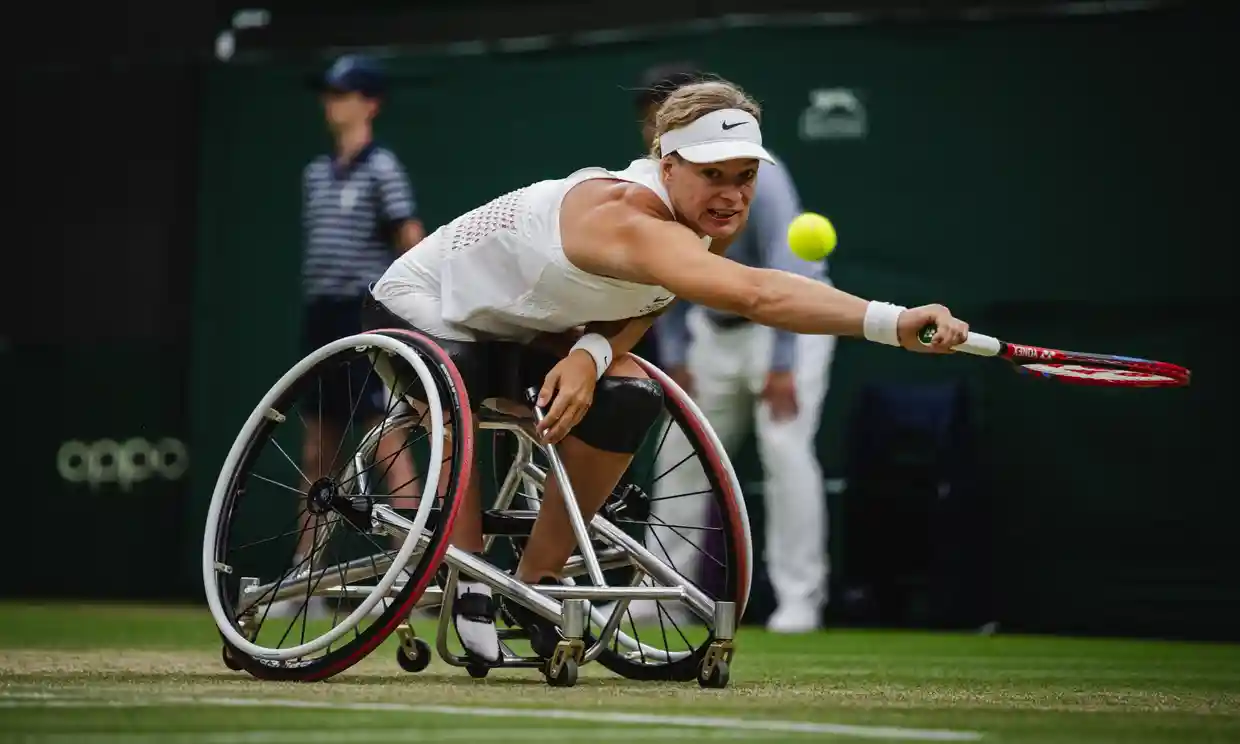Dutch wheelchair tennis champion Diede de Groot enters this year’s US Open with an unblemished singles record since February 2021, displaying a determined pursuit of triumph once again. Her dominance in the sport can be likened to a remarkable transformation of exaggeration into reality. Despite her official status as a five-time consecutive US Open champion, it might be more accurate to portray her as the reigning champion in all aspects. This year, just as in 2022, she has emerged victorious in every singles tournament she has entered.
A remarkable feat underscores her record – de Groot hasn’t experienced defeat in a singles match since February 2021, an astonishing streak extending to 111 matches and ongoing, culminating in her recent Wimbledon victory. Within this remarkable run, she has claimed an uninterrupted sequence of 12 grand slam titles, along with gold medals at both the Paralympics and the European Para Championships. Should she secure another triumph at the US Open in the upcoming days, de Groot will clinch her third consecutive calendar-year grand slam.
Such relentless accomplishments invite parallels with the most esteemed figures in tennis history. Her collection of 19 grand slam singles titles, while trailing behind players like Serena Williams and Novak Djokovic, holds significant promise, given her youthful age of 26, leaving ample time for her to ascend further.
A comparison with Williams is particularly apt, as de Groot’s unparalleled accomplishments extend beyond singles play into the realm of doubles. While her recent singles record is nearly flawless, her doubles achievements are equally astounding. Recording 17 grand slam doubles titles, including a calendar year grand slam in 2019, de Groot stands as a reigning champion in doubles at the Paralympics, the European Para Championships, and in three out of four grand slams.
While statistics align her career with that of Williams, de Groot herself deflects such comparisons when speaking with The Guardian. Rather than dwelling on similarities, she engages in introspective discussions about the challenges of sustained success.
“The journey to the top is one thing,” she reflects, “but maintaining that position consistently over the years is far more demanding. It necessitates an immense level of discipline, strength, and energy. When I was striving to reach No. 1, my goals were simpler, like improving my forehand. Now that I’m here, the motivation has to originate from within. That’s what fills me with pride. I constantly identify areas for refinement.”
De Groot attributes her constant drive for improvement to her enduring rivalry with Yui Kamiji of Japan, the world No. 2. Kamiji, a 27-time major champion in both singles and doubles, is the sole player to defeat de Groot in a singles match. Their interactions have led to mutual growth and a formidable rivalry.
Amidst her achievements, de Groot acknowledges the influence of her training partners in the Netherlands, where wheelchair tennis dominates. The collaborative training structure among Dutch national teams fosters a synergistic environment.
“We function as a cohesive unit,” de Groot explains. “I train with male, female, and junior players. We spend the week together and travel as a team, despite the individual nature of the sport. This camaraderie elevates us daily, evident in our results.”
One could speculate that the Netherlands’ wheelchair tennis success stems from high participation rates. However, de Groot dispels this notion, suggesting a decline in tennis participants. Despite this, she envisions the appeal of wheelchair tennis in its integration with other forms of the game.
“What sets us apart is the two-bounce rule before a point concludes in wheelchair tennis. This allows seamless integration with wheelchair and able-bodied players alike. We have mixed team competitions, uniting players from both categories,” she notes, envisioning exhibitions featuring mixed-play doubles as a way to amplify interest.
As comparisons with legendary figures like Serena Williams arise, de Groot’s humility is evident. She laughs off attempts to equate herself to Williams while acknowledging her admiration for the latter’s resilience. The parallel is clear in her mind, even if she perceives it on a more modest scale.
While de Groot’s humility might temper such comparisons, her accomplishments undeniably mirror the numbers – she’s amassed more grand slam titles than Williams had at the same age. With her ongoing triumphs, the comparison is likely to surface more frequently, becoming increasingly challenging to evade.
